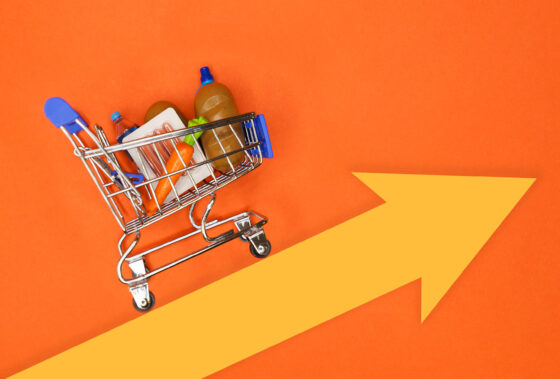
After the summer holidays, inflation could rise again to +7%. The highest point should be reached by the end of the year, at +10%, confided Nicolas Léger, an expert from NielsenIQ, who analyzes the rise in consumer product prices week after week. Explanation.
INSEE announced inflation of 6.2% in July. How high is it in food?
During the first three weeks of July, we recorded a 5.68% increase in consumer goods prices compared to the same period in 2021. The situation is unprecedented.
Will prices continue to rise?
To answer this question, we must first look at the reason for inflation. Climatic conditions explain why many categories of food products are inflationary. Too much drought or too much bad weather leads to crop failures. Of course, we think of mustard because it is the emblem of the shortages that have been noted in the stores in recent weeks. But it also concerns grains, the lack of which has many consequences. In July, the frozen meat and poultry category is the most inflationary. In one year, the rates have increased by 22.01%. The cost of grains has risen because of their shortages. Pasta is the second most inflationary category, with a price increase of 17.3%.
From mustard seeds to chickpeas to Mexican peppers, the list of food shortages continues to grow… Unfortunately, global warming is not new. Why is this phenomenon in 2022 so often mentioned as the cause of inflation?
Getting worse ! With global warming, the phenomena are becoming more and more apparent. Moreover, the problem of drought does not only affect France. For each product category, there is always a climatic reason to explain the price increase. Take Brazil, for example, where the coffee crops were punished by frost.
The war in Ukraine is therefore not the main reason for the increase in prices on the shelves…
It is wrong to present the conflict in Ukraine as the first cause of the rise in prices on the shelves! We had that impression because we witnessed a shortage of sunflower oil and the supply of rapeseed oil was complicated from the start of the war. Today, oil is the third most inflationary food category, at +14.1%. But take the rise in pasta prices. It was observed from September 2021, when the conflict in Ukraine broke out on February 24…
Should we be afraid of other food shortages?
When the price of a commodity rises, it takes about a year before it has an effect in the stores. This is the lesson we learned during the economic crisis of 2008. This is why inflation accelerated from January last year. Harvest conditions were indeed disastrous in January 2021. A year and a half later, we could have made the various potentially “endangered” products. We expect a price increase of +7% at the beginning of the school year and by the end of the year we should experience an inflation of +10%. Are we going beyond this level? I am not sure. On the other hand, the situation is likely to continue at this stage.
And when can consumers expect prices to fall?
During the economic crisis of 2008-2009, the situation started to turn around a year later. Before this time, after the peak that could occur at the end of the year, there will be a stabilization phase. Its duration is difficult to predict. In any case, it will take longer than during previous economic crises.
(ETX Daily Up)